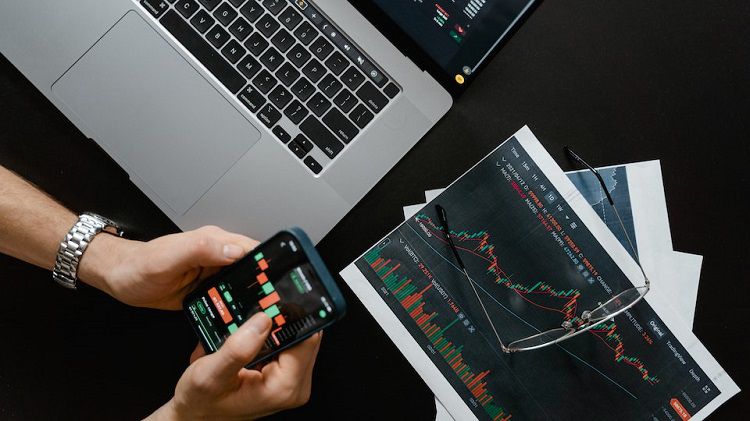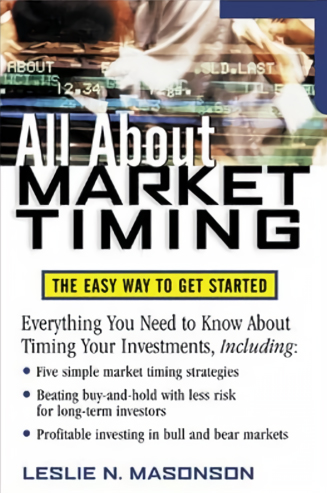Forward testing is an important step between backtesting and consistently profitable financial trading.
Forward test, or forward testing, is less well-known than its close acquaintance, backtesting. Most traders understand the importance of backtesting in order to obtain a tried-and-true formula for a successful trading career. However, traders are less enthusiastic about forward testing.
In fact, forward testing is an important step between backtests and consistently profitable financial trading. We will briefly explain why forward testing is necessary and how to do it correctly.

What is Forward Testing in Trading?
Forward testing is a simulation of real trading that requires traders to strictly use the trading system that has been tested in backtesting. It is also commonly called "paper trading".
While backtesting is the process of using historical price data to test a trading strategy's performance, forward-testing supplies traders with additional data to assess the same strategy's feasibility in real trading. As such, backtesting and forward testing complement each other.
Why is Forward Testing Important?
Compared to the real market circumstances, there are a number of things that backtest cannot consider, such as:
- When a strong signal emerges, you might doze off.
- The impact of spreads, swaps, and other technical factors on the market.
- Fear, greed, and other psychological quirks that manifest themselves when money is involved.
Investment offers are usually accompanied by a fair warning, "historical returns cannot determine future results". Similarly, backtesting cannot be the be-all and end-all of creating a successful trading strategy. We also need to test the strategy in situations as close as possible to the authentic market conditions.
How Do You Test A Trading Strategy?
There are 3 steps to testing a trading strategy: backtesting, forward testing, and periodical evaluation. We have previously discussed backtesting and how to do it like a pro, see the article here. Next, we are going to do some forward testing.
A proper forward-testing requires 3 components, they are:
- The trading system that has been tested through proper backtesting. The system should at least comprise of entry and exit targets, including stop loss, profit target, and when to abandon a bad trade.
- A demo account with virtual funds or a live account with small amounts of initial balance. Beginner traders should start with a demo account till they fully understand how the market works. However, traders who seek to improve their skills would do better with forward testing in a live account while training their money management skills. A cent account or a micro account would suffice because it is not intended to generate profits but to merely test the new trading strategy.
- Trading journal, either taken from account history or manually written. Metatrader users may download a detailed report from the platform's Account History menu, including profit factor, gross profit, gross loss, maximum drawdown, etc.
Once all the prerequisites have been prepared, it's time to begin forward testing your strategy. A forward test is conducted in the same manner as regular trading. The key point in this process is to constantly abide by the rules established by your trading system. If you can train yourself conscientiously in a disciplined manner, it will be a good habit that is ingrained in all of your trading actions in the future.
As stated above, it's a good idea to use a cent account for forward testing. Reduce the risk on each position by 0.5 to 2% of the equity. It is recommended to execute (at least) 100 trades in the forward test before assessing, analyzing, and fine-tuning your trading system.
If your trading system uses any time frame higher than Daily, then forward testing on various forex pairs may need 1 or 2 months. Execute more trades if any doubt arises while the process is ongoing.
Afterward, compare the forward test results with the backtest results you have previously obtained. If you have done the trades correctly, they should not deviate too much, with a maximum margin of error of less than 5%.
In the event that the results of backtesting and forward testing are drastically different, there may be several reasons. Some of them are:
- You missed golden chances because you didn't see the charts in time or simply lacked discipline.
- Improper backtests, forward tests, or both.
- Either backtest or forward test was not carried out in a sufficiently long period of time.
- Changing market situations.
There are many other things that may affect the outcome of forward testing compared to the previous backtesting. You can use them to identify and improve any shortcomings in both the system and yourself. For instance, if asset prices frequently reverse when gains are two times higher than the risk, then you should adjust the risk/reward ratio of the strategy to 1:2.
In short, backtesting and forward testing may reveal lots of things about your strategy. Both pluses and minuses are equally important because they can help you improve your strategy.
It is indeed impossible to build a 100% accurate trading strategy, but you can try to make up for its flaws as best as you can. In case there are any flaws that cannot be improved at all, you should consider them as inherent weaknesses that you have to be aware of.

 Dedicated FREE FOREX VPS
Dedicated FREE FOREX VPS Free FOREX Virtual Private Server
Free FOREX Virtual Private Server MT4 Demo Contest, Get $500
MT4 Demo Contest, Get $500 Sign Up for an Account, Claim 60% Deposit Bonus
Sign Up for an Account, Claim 60% Deposit Bonus Free MT4/MT5 VPS 2024
Free MT4/MT5 VPS 2024 Send E-mail and Get Free Merchandise
Send E-mail and Get Free Merchandise $1K Refer a Friend Bonus for Pepperstone Pro clients
$1K Refer a Friend Bonus for Pepperstone Pro clients Maximize Your Earnings with 100% Deposit bonus
Maximize Your Earnings with 100% Deposit bonus Trade to Win, $5,000 Monthly Demo Contest
Trade to Win, $5,000 Monthly Demo Contest Claim 30% + 15% Deposit Bonus from LiteFinance
Claim 30% + 15% Deposit Bonus from LiteFinance












